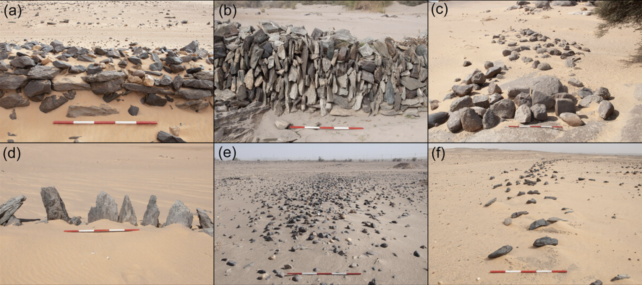ramonmercado
CyberPunk
- Joined
- Aug 19, 2003
- Messages
- 58,202
- Location
- Eblana
Ancient Gold Center Discovered on the Nile
Dan Morrison in Merowe, Sudan
for National Geographic News
June 18, 2007
Evidence of large-scale gold extraction in the ancient Nubian kingdom of Kush has been found along the Nile River, archaeologists announced today.
The discovery is part of a race to save as many antiquities as possible before a dam inundates a hundred-mile (160-kilometer) stretch of the Nile in northern Sudan.
The presence of gold in the African region "may have been one of the main reasons for the colonization of Sudan by the ancient Egyptians," said Salah Mohammed Ahmed, the head of Sudan's antiquities agency.
Spreading out from the Nile, ancient Nubia followed the river from southern Egypt deep into what is now northern Sudan (Africa map). In the time of the pharaohs, Nubian lands were the subject of numerous incursions from the north by the Egyptians.
Renowned for Gold
Archaeologists from the University of Chicago found more than 55 grinding stones at Hosh el-Geruf, about 225 miles (362 kilometers) north of the Sudanese capital of Khartoum (Sudan map).
Date from between 2,000 and 1,500 B.C., the stones were used to grind ore, the team said. The ore then would have been washed with water to tease out gold flakes.
"Nubia was renowned for its gold deposits," said Geoff Emberling, a leader of the expedition.
After Egypt's New Kingdom (1539 to 1075 B.C.) conquered the southern Nubian kingdom of Kush, "they took in tribute hundreds, if not thousands, of pounds of gold each year."
The first recorded kingdom in sub-Saharan Africa, Kush was one of the first civilizations to take hold in the Nile River Valley.
The kingdom "was unusual in that it was able to use the tools of power—military and governance—without having a system of writing, an extensive bureaucracy, or numerous urban centers," Emberling said.
Before the Deluge, a Flood of Finds?
The new discovery is part of an international effort to salvage artifacts before the Merowe Dam creates a 108-mile-long (174-kilometer-long) reservoir south of an area of rapids known as the Fourth Cataract.
The inundation is scheduled to begin in the fall of 2008. It may be delayed, though, because members of a river tribe, the Manasir, have refused to be moved to an agricultural site off the river.
Some Manasir leaders charge that the archaeological effort provides political cover for the construction of the dam, and they have banned salvage efforts in their territory.
When Emberling's group arrived in Sudan in January, Manasir representatives told them to find a new dig—the site they'd planned to work at was off-limits.
"They were very firm in their stand. We had to go to Plan B," said Emberling, whose research was funded in part by the National Geographic Society's Committee for Research and Exploration. (National Geographic News is part of the National Geographic Society.)
The project was saved when Henryk Paner—director of a team from Gdansk, Poland's Archaeological Museum—invited Emberling's team to work on one of the Polish sites, just outside Manasir territory.
(Related: "Four Killed Over Nile Dam Project That Threatens Nubian Towns" [June 15, 2007].)
More Finds Nearby
One of the biggest surprises of the expedition was the discovery, in a cemetery at a nearby site called Al-Widay, of jars and tulip-shaped beakers from the Kushite capital of Kerma.
The Kerma artifacts suggest that Kushite leaders were able to project their control more than a hundred miles (160 kilometers) farther up the Nile than previously thought, Ahmed said.
Archaeologists will only be able to excavate a fraction of the estimated 2,500 sites in the area before the flooding begins.
Ahmed, of Sudan's antiquities agency, said that past archaeological efforts had illuminated the lives and funerary practices of Kushite elites. But recent digs have also shed light on rural life in those civilizations.
"It's very important to see the other face of the coin," he said.
Archaeologist Emberling added, "Studying Kush helps scholars have a better idea of what statehood meant in an ancient context outside such established power centers of Egypt and Mesopotamia."
Link is dead. The first portion of the story (only) can be accessed via the Wayback Machine:
https://web.archive.org/web/2008031...raphic.com/news/2007/06/060719-gold-nile.html
Last edited by a moderator:




 Maybe I need more coffee...
Maybe I need more coffee...